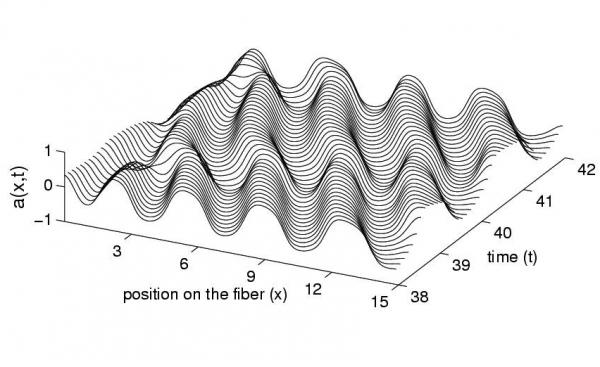Like having a heart attack.
Writing in in the journal CHAOS, researchers say chaos models may someday help model cardiac arrhythmias (abnormal electrical rhythms of the heart) and help to understand the behavior of ventricular fibrillation, a severely abnormal heart rhythm that is often life-threatening, in order to mitigate it.
One study found chaos in two and three dimensions in the breakup of spiral and scroll waves, thought to be precursors of cardiac fibrillation. Another study found that one type of heartbeat irregularity, a sudden response of the heart to rapid beating called "spatially discordant alternans," leads to chaotic behavior and thus is a possible predictor of a fatal heart attack.

A space-time plot of the alternans along a cardiac fiber is a solution to the Echebarria-Karma equation. Credit: AIP
Mathematicians Shu Dai at Ohio State University and David Schaeffer at Duke University have built on this work to find another chaotic solution to an equation for alternans along a one-dimensional fiber of cardiac tissue with stimuli applied at one end. Assigning extreme parameter values to the model, the team was able to find chaotic behavior in space over time. The resulting chaos may have a unique origin, which has not yet been identified.
Citation: Shu Dai and David G. Schaeffer, 'Chaos for cardiac arrhythmias through a one-dimensional modulation equation for alternans', Chaos 20, 023131 (2010); doi:10.1063/1.3456058






Comments